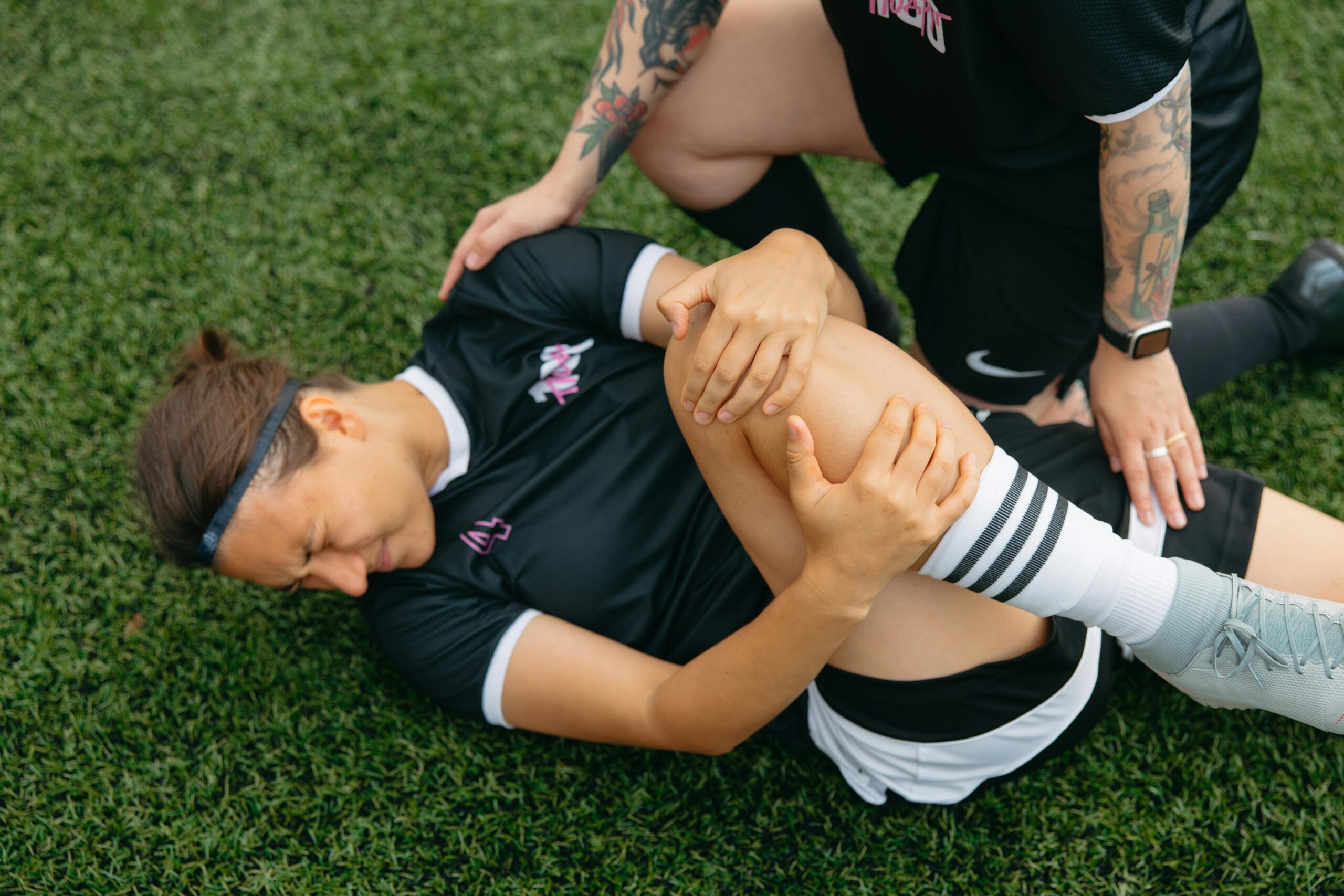
![]() By Dr. John R. Mishock, PT, DPT, DC
By Dr. John R. Mishock, PT, DPT, DC
Knee Injuries in Sports: How does Early Physical Therapy Help?
By Dr. John R. Mishock
In the US, 7 million knee injuries present to emergency rooms every year following sports-related injuries. Studies show that 15-40% of sports-related injuries occur at the knee. Anterior Cruciate ligament (ACL) injuries alone account for up to 200,000 per year in the US, costing between $20,00 to $50,000 with surgery and rehabilitation. In contact sports like football and soccer, knee injuries represent up to 52% of all injuries. In basketball, that number is approaching 25% of all injuries. (Gage et al. Acad Emerg Med; Tummala et al. Arthroscopy)
Physical therapy is essential in helping athletes recover from a knee injury by reducing pain, improving function, and returning the athlete to their sport. PT also had a critical role in preventing re-injury and optimizing sports performance following recovery.
Why is it important to see a physical therapist early following an injury?
Early intervention with physical therapy is key in managing pain and expediting recovery. Techniques such as modalities (ice, heat, electrical stimulation), manual therapy, and taping are used to promote healing. Research shows that seeking physical therapy within the first week of injury can prevent negative adaptations and speed up recovery. Beyond this, the PT will educate you on home treatments that positively impact recovery.
How do early movement and therapeutic exercise help?
Physical therapists use therapeutic exercise to promote recovery. Therapeutic exercise involves specific movements and muscle contraction types (isometric, eccentric, and concentric) to improve pain and optimize healing. This type of scientifically based exercise is specific to the athlete’s needs and could be anything from stretching to eccentric muscle contraction. Eccentric exercise has significant scientific research in modulating nerve ingrowth, releasing the body’s natural pain relieves (nociceptive mediators), increasing collagen release, and enhancing capillary growth. All this helps increase tendon healing time, decrease pain, and improve function.
How does the physical therapist help me return to my sport? I am afraid of pain and re-injury.
All athletes have a fear of movement and re-injury (fear avoidance). The physical therapist creates a step-by-step plan to increase the movement’s intensity, duration, frequency, and impact to return the athlete to their sport safely. Sports-specific training could include focused drills such as squatting, lunging, jumping, pivoting, and running to stimulate the specific needs relative to the athletes sport.
How does the physical therapist help me with sports performance following my injury?
Once the athlete has recovered, it is essential to have a plan to prevent future injury and help the athlete improve in their sport. The key to optimal sports performance is rest and recovery, nutrition, and a periodized exercise training program (off-season, pre-season, and in-season exercise training). Science has shown that this periodized exercise training program can optimize the athlete’s God-given abilities in improving strength, power, speed, first-step quickness, and jumping.
We can help!
Visit our website to learn more about our treatment philosophy, our physical therapy staff, and our 5 convenient locations in Gilbertsville, Skippack, Phoenixville, Boyertown and Limerick at www.mishockpt.com.
Schedule your visit by visiting this link: https://mishockpt.com/request-appointment/
Gilbertsville – Skippack – Phoenixville – Boyertown – Limerick
Dr. Mishock is one of only a few clinicians with doctorate-level degrees in both physical therapy and chiropractic in the state of Pennsylvania. He has authored two books; “Fundamental Training Principles: Essential Knowledge for Building the Elite Athlete”, and “The Rubber Arm; Using Science to Increase Pitch Control, Improve Velocity, and Prevent Elbow and Shoulder Injury” both can be bought on Amazon and train2playsports.com.[/vc_column_text][/vc_column][/vc_row]

